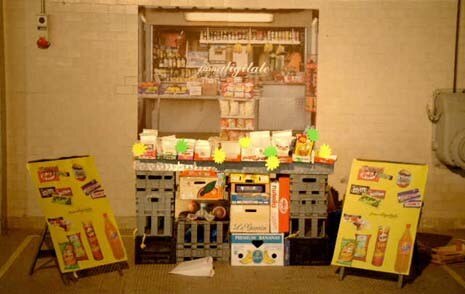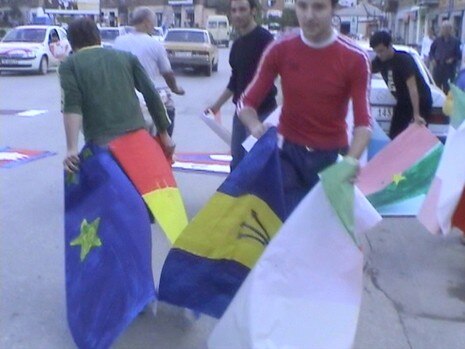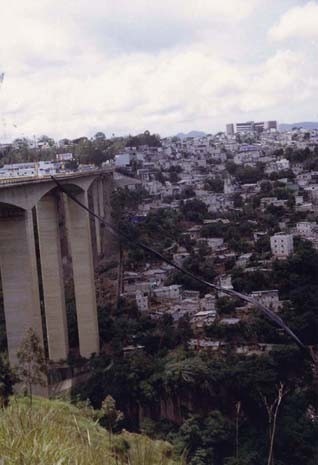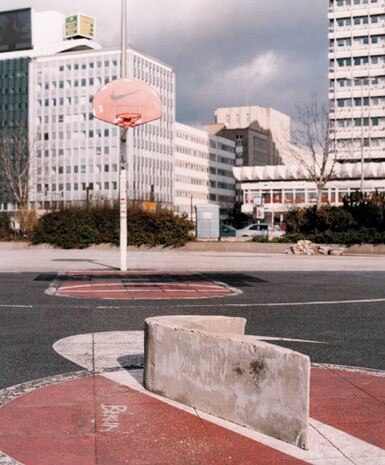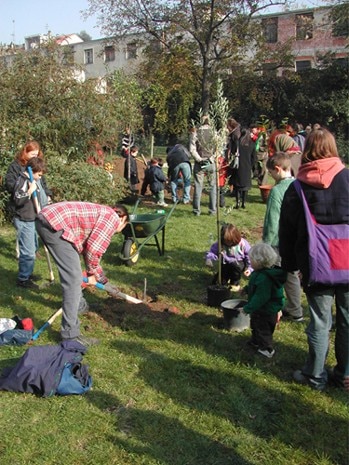It might have been described more as a Contested space – Networking city than as an actual exhibition. The works on view had ordinary, normal characteristics, where normality is meant as identifiable by each single individual wishing to approach a given type of artistic work. And it is in this concept of perfect recognizability that the time-honoured ‘aesthetic pleasure’ which every art form is assumed to convey was rediscovered. Clearly there has been a radical change in the art field. Networking proposes work that can be linked to the many changes taking place in society, where every citizen of the world can identify the different realities represented. With Networking an epoch in transition – that of today - was staged, which fails to recognise itself in the past but still cannot find form in the present.
Having emerged around the second half of the 1990s in the wake of geopolitical and cultural transformations in the late ‘80s, and now fully mature, Networking is gathered around such definitions as: Artistic Activism, Art of Action and Public Art. As Marco Scotini, curator of the event, explains, many of the artists “abandon the traditional relation between creator and observer and creep right into the very processes of the production system itself: of work, value, space and social issues.”
True to its natural vocation, Artistic Activism peers into the gaps in society and its urban fringes in search of clandestine changes. Or it goes out looking for others dictated by contingent necessities, and is confirmed as the direct and real-time beacon for all those extra-institutional transformations which politics finds it hard, or does not wish, to recognise.
For a single day, Networking told Florence a large number of stories, all of them fascinating and moving. Though initially put forward as a workshop where artists - like the Stalker group, the Danish Superflex, the A12 Group, Stefano Boccalini, Bert Theis, Meschac Gaba or the Cuban artist Carlos Garaicoa - guided the efforts of numerous younger participants, Networking proved to be a perfect means of presenting the works of diverse artists who have spent time working in the public sphere.
Thus in the nooks and corners and damp spaces of the Leopolda Station, surrounded by the buzz of people and the sudden deafening noise of a vespa simulating an explosion, and by video images projected in all directions, Networking city sought and proposed some exciting ways of achieving contemporary urban transformation through the use of aware and responsible art practices.
Artists Stefano Boccalini and Bert Theis presented a project for the Isola quarter in Milan, in collaboration with Cantieri Isola, a workshop that has been active in that district for some time. Isola – where both artists live – is situated in an old part of the city, between the Garibaldi and the Central stations. Its inhabitants have for a while now been up in arms against the City Council which has been threatening to “erase the district’s green areas and hand them over to building speculators”.
So Stefano Boccalini invited people living in this quarter to plant trees characteristic and representative of their varying cultures, so that “a fig tree” could grow “next to an exotic tree, and a lavender bush next to a paulonia". The result is Wild Island, a new park which, like a contemporary city, grows and develops among the differences of interwoven cultures.
Meanwhile Bert Theis has started OUT, the urban transformation office: a veritable construction site of ideas, where people can meet and propose ways of bringing the quarter back to life.
The Stalker group proposed a nomadic observatory, focused on the city of Livorno: a sort of workshop where young artists used videos to film places once productive and crowded with people, but now abandoned and defined as “empty of memory”.
Their intriguing work springs in part from the emotions aroused by an accidental pretext, as often happens in the Stalkers’ work. “The beginning of the bombing of Baghdad coincided with the collapse of a building in Livorno… a coincidence that opened a passage through a memory gap in this city”.
A sort of new parallel economy, in contrast to that of the office, occurs through the work of Superflex, the Danish group. This group has even set up a television network, Superchannel as a communication medium accessible to all those wishing to tell their own local stories. “Only by operating in local terms”, explain Superflex, “can any action be taken on the global system”.
Superflex held a workshop in Prato. Under the name Supercopy, it set about manufacturing, on a very small scale, products existing on the market – from baci perugina chocolates to snacks – which were then sold to the public at a symbolic price. The aim of Supercopy was of course not to make a profit, but to satisfy albeit very simple needs.
The African artist Meschac Gaba, during his Transformation workshop, created a whole collection of adult clothing, made from children’s clothes which the rich West sends to Africa. The new clothes were produced with the utmost care. At the end of his work Meschac Gaba organised a parade of models created during the workshop.
Networking afforded an overview of different situations and was the ideal venue for artists working on artistic activism. The work of the young Albanian artist Armando Lulja, Brotherhood Phobia, is impressive. His video was made in Tirana the day after the opening of the second Albanian Biennale. With a group of friends the artist spread, along the main street of Tirana, the flags of all the countries that had not been invited to the Biennale, as a sort of second invitation.
Many cars drove over the flags without noticing, whereas the citizens of various extractions, once they had recognised the flag of their country – and without really having understood what was going on – gathered them up with great pride and waved them in front of the videocamera.
The Guatemalan artist Anibal Lopez showed a video of a protest march and consequent state of mourning by the city’s population for the candidature of General Riosmontt, accused of genocide, for the political elections in Guatemala. The population protested and wore black armbands in mourning, while Lopez and others tied together and waved a very long black plastic ribbon from a motorway infrastructure to cast a threatening shadow over the city below. As a result of this vehement public protest, Riosmontt was forced to withdraw his candidature for the elections.
Networking City was organised by the Tuscany Regional Council, the City Councils of Florence, Livorno, Monsummano Terme, Prato e Siena, and the publishers Tra arte Maschietto editore.

